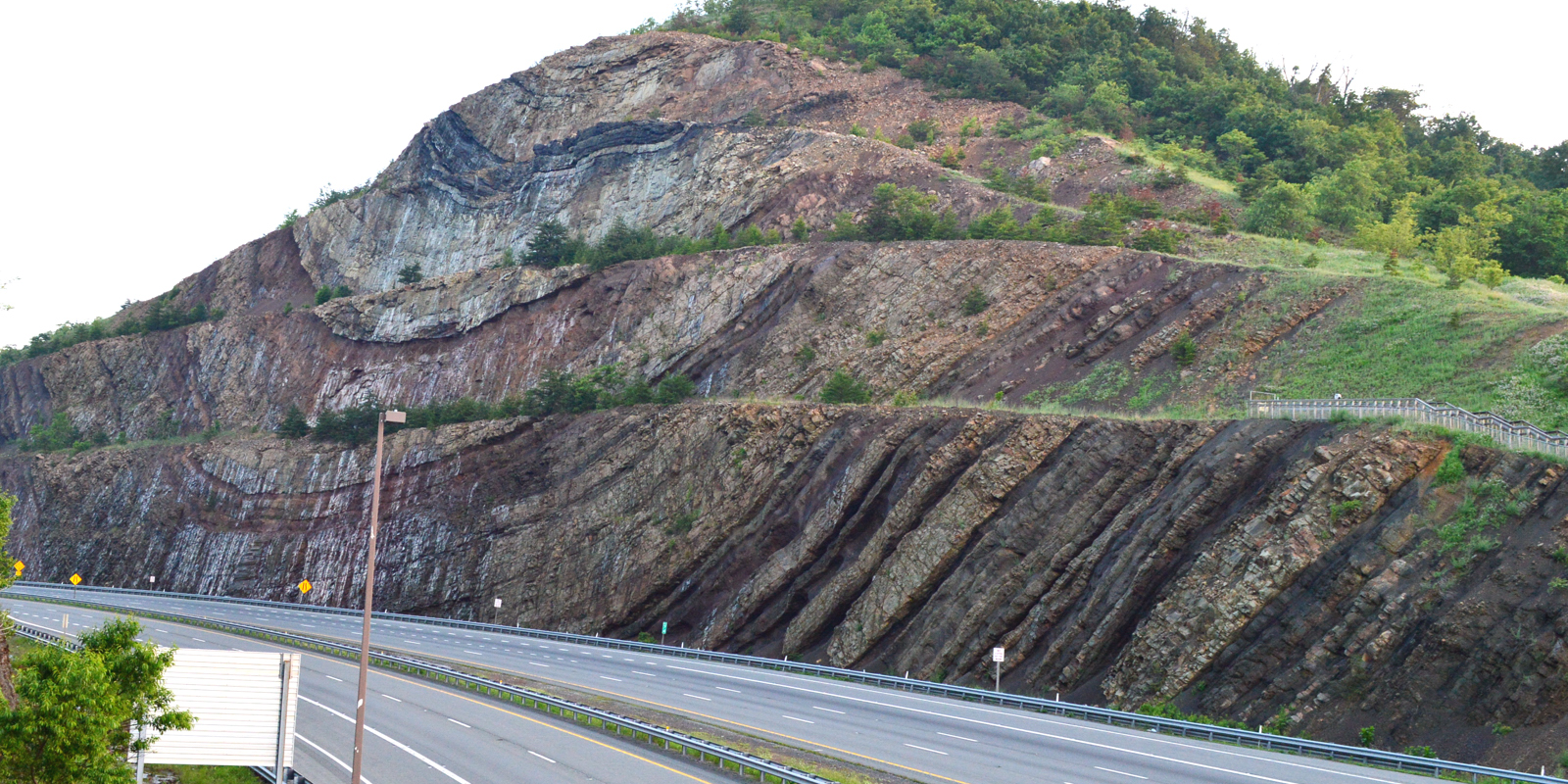In this edition of Rock Record, the Geology Gents unearth a few key examples of how newly exposed outcrops have led to important geological insights, as well as some geologic exploration into freshly exposed rock and sediments exposed by the CZU Lightning Complex Fires.
By Graham Edwards and Gavin Piccione (aka the Geology Gents)
To reconstruct Earth history, geologists rely on the rock record: the accumulated rocks that, through their accumulation and formation, are relics of ancient geologic processes spanning geologic history. Such rocks provide a spyglass with which to peer into geologic history. But our view through this spyglass is limited to rocks that are both exposed at the Earth’s surface and have survived the effects of erosion.
As geologists, we often rely on Earth processes to expose new rocks and provide us fresh glimpses into Earth’s history. Since exposing fresh rock requires a lot of energy, natural disasters or extreme natural events can expose clues to this history through fresh rock surfaces. Human activities, such as construction or mining, can also expose new geological wonders.
In this edition of Rock Record, we’ll go through a few key examples of how newly exposed outcrops have led to important geological insights, as well as some geologic exploration into some freshly exposed rock and sediments exposed by the CZU Complex Fire.
Roadcuts
The construction of roads often requires the removal of large sections of rock, leaving sheer rock faces on the sides of the road. Some of the most famous rock outcrops are ones exposed in roadcuts and these unique locations are a frequent destination for college geology classes.
As undergraduates, the Gents (i.e. Gavin and Graham) explored roadcuts in the Northeastern US, and learned about tectonic motion through the faults and folds exposed in roadcuts (like the one in the image to the right), about metamorphic rocks via roadcuts in Maine, and about large deep-sea sediment avalanches (called turbidites) from roadcuts in upstate New York. Rocks exposed on the sides of roads can also be significant for geologist’s understanding of the sequence of events in an area.
For instance, a roadcut in Owens valley (see image below), settled a longstanding debate amongst geologists about whether the Bishop Tuff was deposited before or after the first glaciations in the area. The exposed rock showed the Bishop Tuff sitting on top of the Sherwin Till glacial deposit, meaning that the tuff must have been deposited after the till.
Fire
Forest fires are, in many cases, an important natural event for the health of a forest because they clear the forest floor of brush and dead vegetation. Through this process, fires also expose large portions of rock that would otherwise not be visible. For this addition of Rock Record, the Gents explored some areas of the Santa Cruz mountains that have been burned in the CZU Lightning Complex fires last August.
Taking Empire Grade North, areas of Cretaceous (145-66 million years before present) igneous and metamorphic rocks that were previously covered by vegetation are exposed in the burn zone of the recent fires.
The Gents explore freshly exposed rock in an area burned by the CZU Complex fire Close up of freshly exposed Cretaceous igneous rocks
Weather
Sometimes extreme weather events can expose new outcrops or geologic features. For instance, the Frijoles Fault of a previous Rock Record post, The Faults that Shape Santa Cruz, was hidden behind trees and shrubs until a powerful storm event in the 1970s drove enough coastal erosion to expose the fault in the sea cliffs. Even more recently, heavy rains can cause landslides on the steep topography of the Santa Cruz Mountains and Santa Lucia Mountains of Big Sur. Each of these landslides exposes new surfaces that allow geologists and geomorphologists to study what causes landslides and the ways that massive amounts of Earth can be rapidly moved down hillslopes.

Meteorites
Some rocks are truly out of this world! Rocks that formed beyond Earth and arrive on Earth are called meteorites. Most meteorites come from the asteroid belt, a ring of rocky debris that dwells between the orbits of Mars and Jupiter, while some meteorites come from Mars and the Moon. As any Earth dweller knows, meteorites are incredibly rare, but they are important samples of other celestial bodies and leftovers from planet formation that we can study in close detail here on Earth. So, a meteorite fall is an incredibly exciting event for planetary scientists and geologists, alike!
One of the most important meteorites ever to land on Earth was the Allende meteorite, which landed in 1969 near the town of Pueblito de Allende in the state of Chihuahua in northern Mexico. The stone broke into pieces before it landed on Earth, but the collected chunks of this meteorite total >4,000 pounds with more pieces still found today! Because there was so much meteorite to go around, many scientists have studied it, and since the Allende meteorite is made of some of the most ancient material in our solar system it has provided an invaluable window into the earliest moments of our solar system just after the Sun formed!

Slice of Allende meteorite (Wikipedia) Lunar meteorite (American Museum of Natural History, www.amnh.org)
What mysteries do you suppose are hiding all around you, covered by trees, houses, or soil?
Rock Record is a monthly blog featuring musings on the mineral world from Gavin Piccione and Graham Edwards.
Graham Edwards and Gavin Piccione are PhD candidates in geochronology with the Department of Earth and Planetary Sciences at UC Santa Cruz. They also host our monthly Rockin’ Pop-Ups as “The Geology Gents”.

